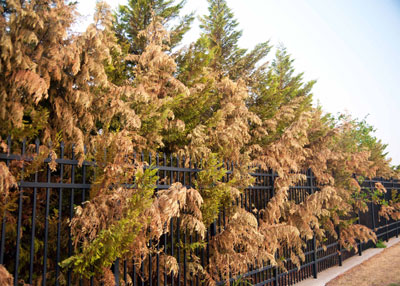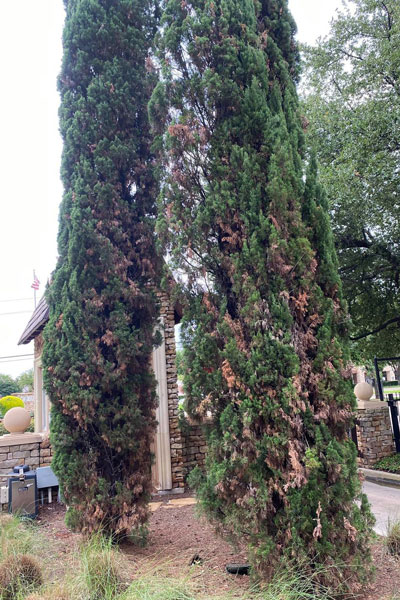Conifers Are Cratering

I’m getting tons of questions about Italian cypress, Blue Point junipers and other related plants that are turning brown section by section, usually starting at the tips of the plants and quickly working their way back down large branches.
Gardeners try to prune out the dead wood, but the plants are so symmetrical by their nature that it pretty well destroys their beauty.

The purpose of this note is to (1) let you know what the problem is and, perhaps (2) encourage you to find alternative plants that won’t be susceptible to these same diseases.

Seiridium canker is responsible for many of the thousands of trees that have been, or will be, lost. It causes entire branches to turn brown. On closer inspection you’ll see a black ooze running down the trunk of an infected tree, and by that time there is no turning back. Pruning simply won’t help.
Phomopsis blight is common on many of the junipers. It shows up at the tips of the branches, killing the shoots back from those points. Pruning and fungicides help more with this disease than they do with Seiridium canker, although that’s not saying a lot.

Wet springs like we’ve been having are prime times for these diseases, and true to form, we’re seeing a lot of each of them.
This Fact Sheet from Texas A&M is excellent, and you’ll find other great information from other southern Land Grant universities with just a little Internet searching.
